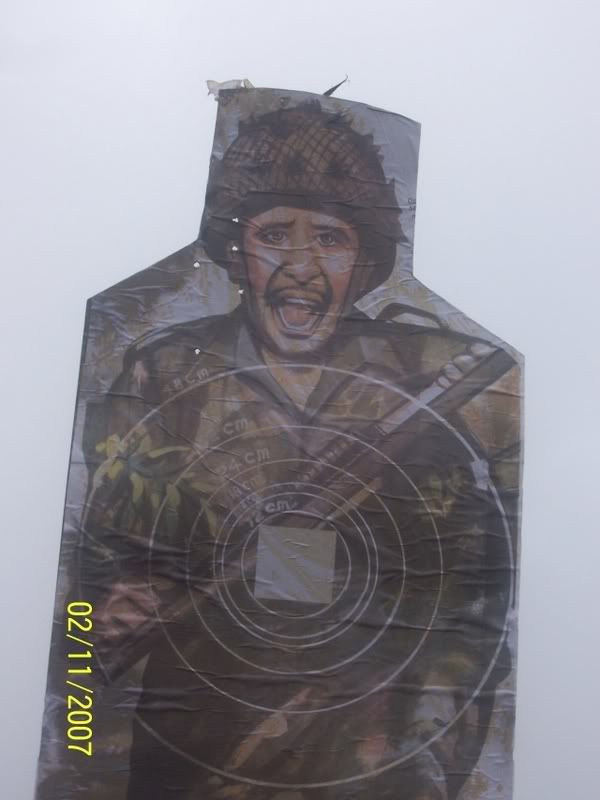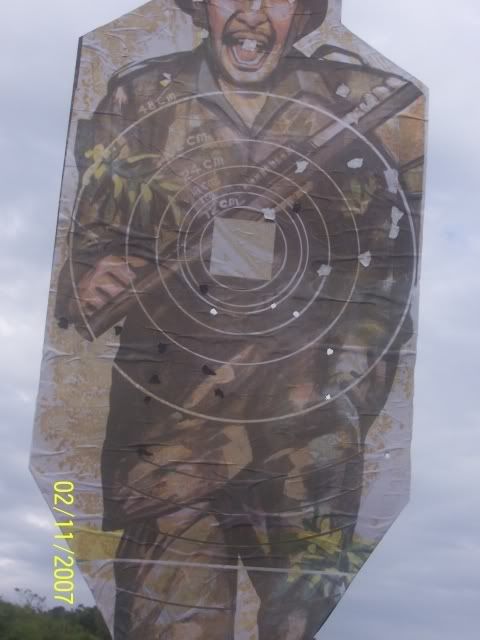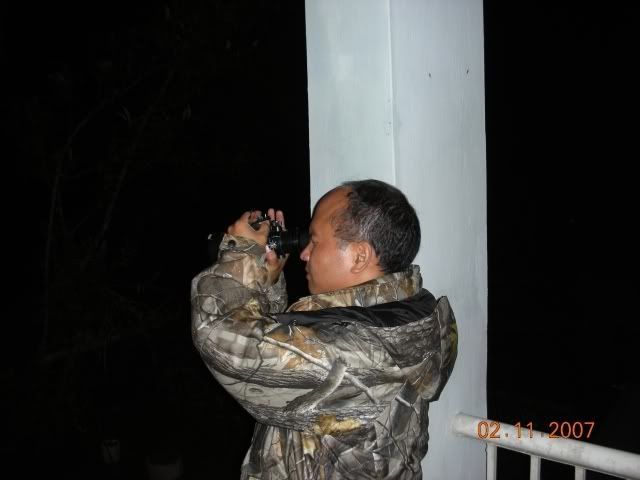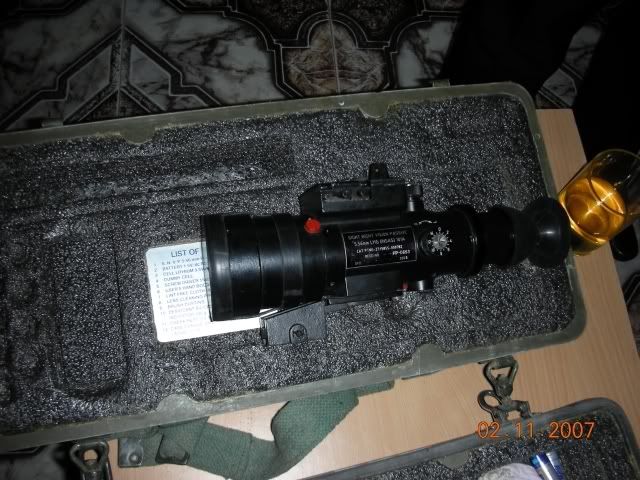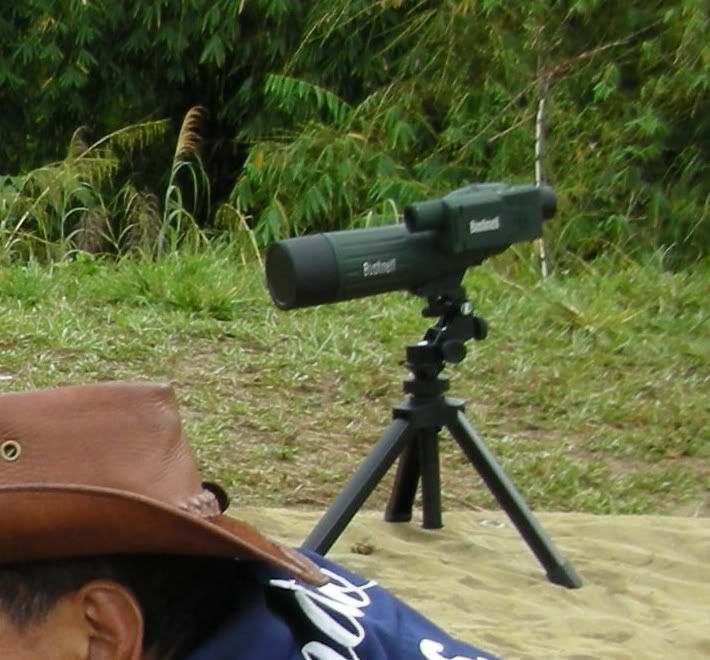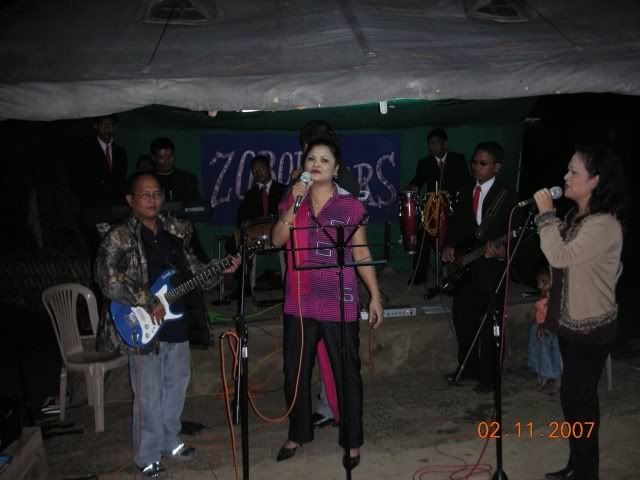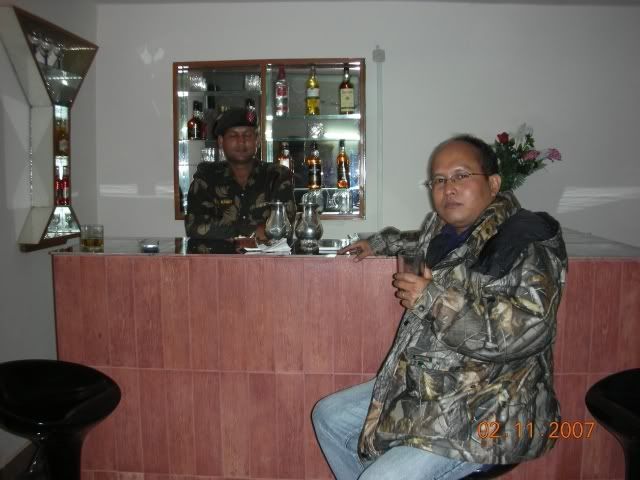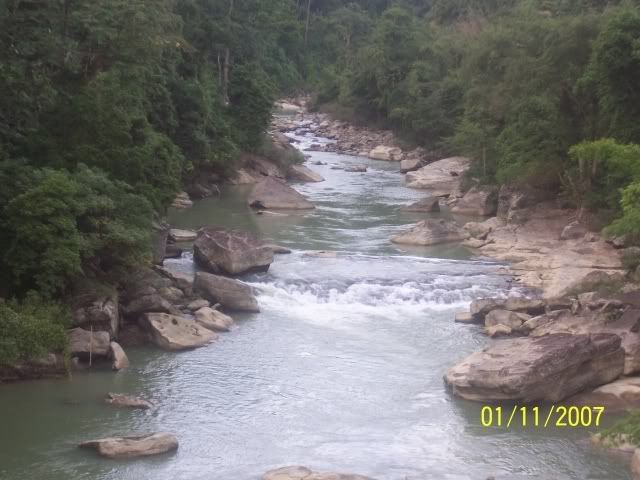A Civilians Review of the INSAS
Jonah L Pachuau (Mad Mizo)
When I mentioned that I wanted to do a civilians review of the INSAS The first words that the good colonel spoke was addressed to his adjutant, a Captain in the Assam Rifles; and it went something like this “He’s going to say its’s a damned good rifle”. Now that was something to think about.. Well to tell you the truth I wasn’t surprised. I have seen and experienced first hand most of the civilian issue small arms manufactured by out infamous ‘Ordinance Factory Board’ and they are nothing short of a disaster! Workmanship is poor, finish is a farce and shooting them is, to be truthful downright uncomfortable. Having tried out a few brand new .315 bore rifles manufactured and supplied by the OFB to the Forest & Wildlife department of Mizoram a few years ago, I remember vividly that it was not unlike the feeling one gets when one triesout one of the illegal, locally fabricated ‘pipe guns’ so common amongst farmers in this hill state. The bolt being made of aluminium was so loose as to be able to rattle even when locked. A quick study of the .315 cartridge with its immensely elongated and bulbous copper encased bullet didn’t do much to bolster ones confidence in the gun either.
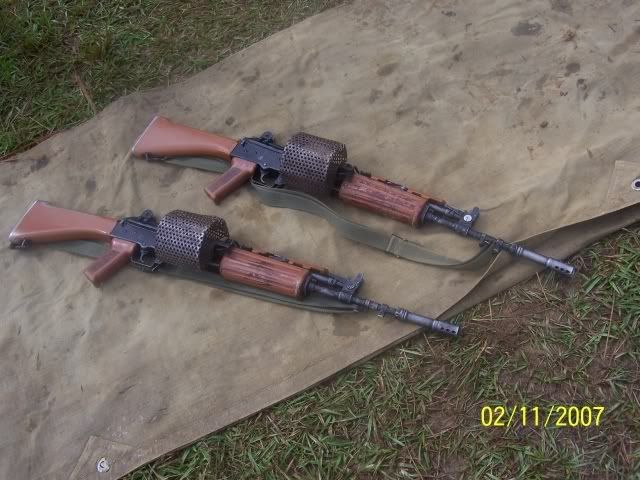
Now when one thinks about the INSAS and its significance as being the mainstay of the frontline soldier of the Indian Army, which happens to be the third largest in the world, One must take a very very deep breath. It would not be inappropriate to mention here that the Government of India spent thousands of crores of rupees in its R&D (Armaments Research & Development Establishment, Pashan, Pune) lasting almost two decades. Not to mention the couple of years it spent weeding out its defects during army field trials. After its acceptance, If I remember correctly the OFB also imported custom built CAD/CAM manufacturing and tooling equipments costing another few 100 crores.
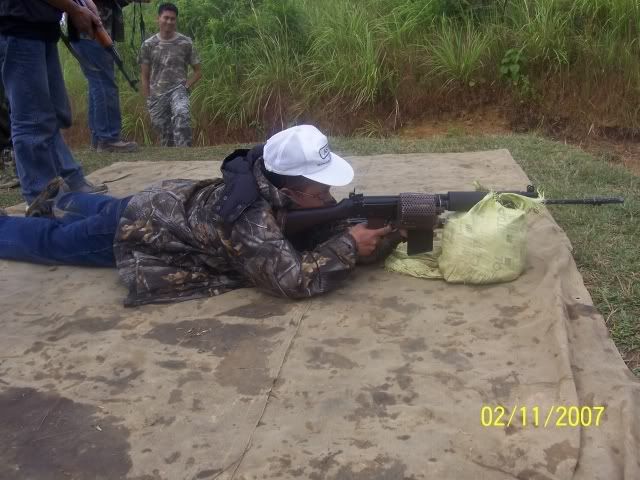
The INSAS which is supposed to be the ‘backbone’ of our prestigious army has gained much media coverage and interest during recent years. I had the opportunity to inspect the earlier models of this rifle along with some pump action 12 bore guns in 1998 at one of the Exhibitions in Pragati Maidan. Although I didn’t have the opportunity to test fire the rifle, I was allowed by the OFB personell to thoroughly check it out (As thoroughly as possible within the confines of the stall without dismanteling it.) Even at that time I remember not being overtly impressed by it, It had a very clunky feeling about it and the cocking handle would get stuck. Having seen the likes of the AK’s and G-3’s I thought that the INSAS didn’t have that streamlined, balanced and ambidextrous feel to it. The pump action which was displayed fared even worse with the action getting jammed almost everytime it was worked. A quick look at the bolt showed inappropriately shallow grooves in the revolving bolt which most probably resulted in it slipping off its rails. The poor OFB armourer gave some lame excuse of it being brand new and never fired. Nevertheless almost 10 years later I am glad I was given the opportunity to testfire this now infamous INSAS rifle.
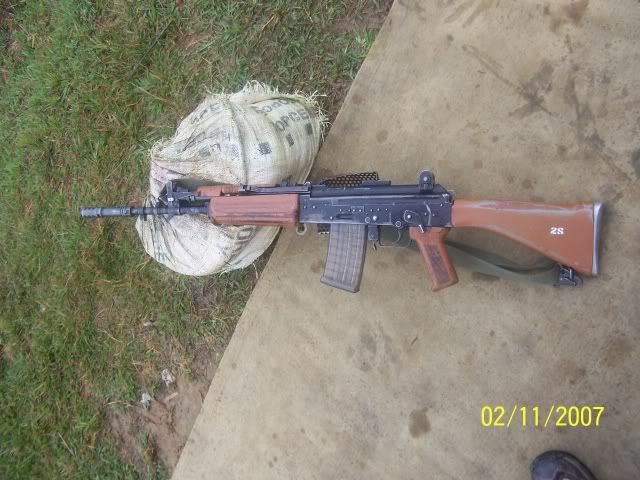
I was actually rather surprised when the army captain who hosted us at the army firing range swore by the accuracy of the INSAS rifle and after letting me fire a few rounds demonstrated this by shooting at a 4x4 piece of wood which was stood on its side. Having done this with an AK-47 (7.62x41) at almost point blank range and having seen the piece of wood get knocked off with tremendous force I was amazed to see the piece of wood still standing! A closer inspection revealed the minuscule exit and entry points which I could have sworn was that of a .22 calibre rifle! Off course I knew better that a .22 calibre rifle could never have entered and exited that piece of hardwood 4x4 at 100 yards! Hmm… this was something to think about.. An OFB product that actually shoots straight and hard! Maybe all this talk about the INSAS being a melon was just bad press! The next few hours with the good captain showed me the working and inards of the INSAS and I could have sworn that they belonged to the AK-47 (I can fully field strip and reassemble an AK-47 in 2 minutes, not bad for a civvy huh..?) Maybe all those years of Pro-Soviet leaning left a hangover which must have rubbed off on the OFB.
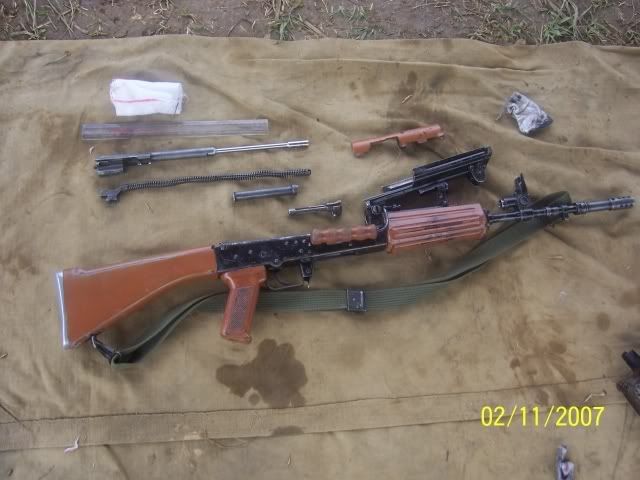
Technicalities and bad PR (much of which are available on the web) aside, the OFB INSAS is really a sweet shooter! The trigger is positive and not too stiff, the recoil is quite manageable even in three round bursts (targets showed the same results when compared by 5 civvys and 2 army personell, only the first round hits the target be it the AK, the INSAS (5.56) or the LMG and the Ishapore (7.62) whether it was in bursts or full auto.) One notable feature of the INSAS that I immediately found quite inappropriate was the fire selector lever which had to be rotated with the thumb a full 180 degrees to select between single shot and bursts mode. This lever, being positioned on the left handside just above the trigger supposedly enables the shooter to use his firing thumb which seems quite convenient. In actual usage the fire selector is rather quite twiddly and having to rotate it a complete 180 degrees to select between the only two available fire modes is not too user friendly. I noticed the soldiers themselves use their left hand to rotate it thus making its convenient positioning rather useless. On a positive note one convenient feature of the INSAS is that the charging handle is maintained on the lefthand side just as in the Ishapore but much more convenient. This is an important feature making the INSAS more userfriendly when compared to the Ishapore as it has a rubber lining making its use quite positive. Other than this the chunky feeling prevails even on the grip and one feels that one is gripping a block of wood rather than the grip of a ‘state of the art’ rifle manufactured under the highest standards and specifications of a modern army.
Coming to specifications, we often read that the INSAS was built and designed to meet the exacting specifications of the Army and that the 3 round burst mode was one of the most important ‘design criteria’. (Lessons learnt from Sri Lanka, Indian army jawans wasted all their ammo by resorting to continous and wasteful full auto fire in the field!) This in my opinion is exactly where the army top brass failed! Their primary specifications were made under the wrong assumptions! It might seem wasteful to the Comptroller Auditor General of India to ‘wastefully use’ 50,000 rounds of ammo to terminate 5 well entrenched and stocked enemy soldiers when 5 well placed shots could have done the job. But try telling that to the soldier who is facing the enemy! Purposely limiting the firepower of the frontline soldier with an intention of ‘cutting down costs’ is downright stupid! Ever since stoneage it is the inclination of man to throwback what his enemy throws at him. Be it a stone or an arrow or maybe even a spear. A soldier who feels that he is unable to ‘give back’ what the enemy is giving him automatically considers himself inadequate and the war is lost even before it has begun. No wonder the Indian Army has never successfully deployed the INSAS in actual battle.
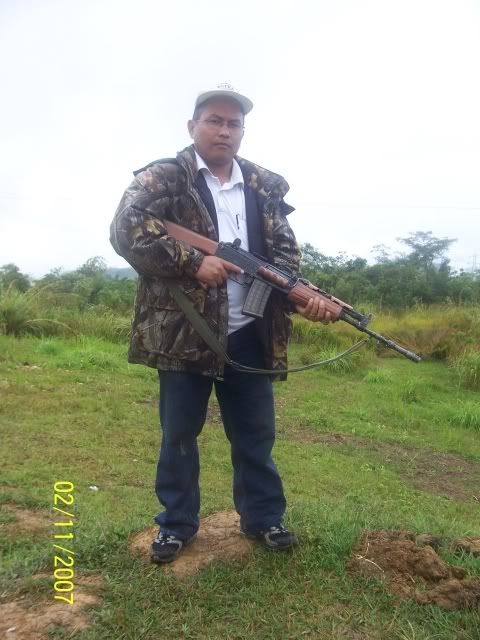
During the 5 hours or so with the Assam Rifles I was able to recognize some of the reasons behind the soldiers reservations with the INSAS, the plasticky furniture was prone to breakages even with a slight knock, It could crack even if it fell on a hard surface with its own weight when leant carelessly against a wall. The gas piston cover (meant to protect it against the elements would keep falling off during patrolling) As I rightly noticed, balance of the rifle was one major grievance of the soldiers as the heavy barrel would tend to drop/droop when held for a long period in battle ready position. This unnecessary need to ‘babying’ their primary weapon causes immense hardship and unnecessary distractions for the frontline soldier who is expected to be ready to face the enemy who could suddenly pop up from anywhere at anytime. With an AK and an INSAS on either hands I asked the seasoned soldier beside me (he was on a short vacation from a forward post) Which would you take to Kargil?? Without any hesitation the poor soldier pointed at the AK-47
A cursory glance through the specifications laid down by the Indian Army for its frontline infantry weapon, one cannot but notice the similarities vis-à-vis the US Army M-16 (Its later day derivative) Well it has taken the US Army a good 40 years to develop the M-16 to what it is now. During desert storm they discovered some of its limitations and improved on it, After Afghanistan and Iraq they now want a bigger caliber! The US Army has been smart if not lucky to not be too dependent on its frontline infantry weapon by its judicious use of air power. Nevertheless, they have different derivatives of the M-16 with different specification for different battle conditions. Maybe the Indian army is asking too much from one gun or maybe they just want to keep the OFB busy with their R&D while they shop for what they want.
If the Indian Army wants a remake of the M-16 looks like they have it. But can we afford it?







